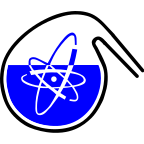Speaker
Description
Ivanets A.I.1, Shashkova I.L.1, Kitikova N.V.1, Radkevich A.V.2, Sillanpää M.3,4
1Institute of General and Inorganic Chemistry of the National Academy of Sciences of Belarus
2Joint Institute for Power and Nuclear Research – Sosny of the National Academy of Sciences of Belarus
3Laboratory of Green Chemistry, Lappeenranta University of Technology
4Department of Civil and Environmental Engineering, Florida International University
Ivanets@igic.bas-net.by
High risk of radiation for human health makes continuous interest in finding effective methods for radionuclides immobilization. Depending on the level of radioactivity, sources, and amount of pollution different methods are used for immobilization of radionuclides, details of which are summarized in some review papers: precipitation, evaporation, solvent extraction, membrane technique, filtration, sorption and ion-exchange. Each method has its advantages and limitations in use, so studies are underway in all these areas [1, 2].
The aim of this work was to study the efficiency of Ca-Mg phosphate sorbents based on dolomite for 60Co and 85Sr radionuclides removal from aqueous solutions depending on the electrolyte content in the wide range of pH. It was important to determine the influence of competing ions in the solution on the stability of Ca-Mg phosphate sorbents and the effect of the surface changes of sorbents on their selectivity towards 60Co and 85Sr removal from solutions with high salinity.
Dolomite from the Ruba (Belarus, Vitebsk region) deposit with the following chemical composition (wt. %): SiO2 1.1, Fe2O3 0.4, Al2O3 0.5, CaO 30.3, MgO 20.0, SO3 0.4, K2O 0.2, Na2O 0.1 and calcination loss 47.0 was used for the preparation of Ca-Mg phosphates. Sorbents with different chemical and phase composition (Fig. 1) were obtained in various dolomite phosphating conditions: PD-1 – mixture of Ca-Mg hydrogen phosphates, PD-2 – mixture of amorphous Ca-Mg tertiary phosphates with admixture of MgNH4PO4 and PD-3 – mixture of MgO, MgHPO4, CaCO3 with admixture of amorphous Ca3(PO4)2 [3, 4].
Fig.1 XRD patterns of Ca-Mg phosphate sorbent PD-1 (a), PD-2 (b) and PD-3 (c)
The process of radionuclides 60Co and 85Sr uptake from model seawater solutions with salt content 0 35 g/L by phosphate sorbents produced from natural dolomite were studied. It was shown that the efficiency of phosphate sorbents depends on the dolomite phosphating conditions which determine the chemical and phase composition of sorbents, acid-base properties and consequently different selective-sorption properties towards 60Со and 85Sr radionuclides in aqueous and model seawater solutions.
Fig. 2 Solution pH after contact with sorbent (pHf) vs pH of model solution (pHo) with salinity 35.0 g L-1
The influence of pH on the removal efficiency of 60Со and 85Sr is determined by the value of pHpzc, which depends on the composition of sorbents and processes of protonation-deprotonation on their surface. For the studied sorbents values рНpzc increased in the row of PD-1 < PD-3 < PD-2, with the values of 7.2, 7.3 and 8.4, respectively (Fig. 2). Only for PD-2 sorbent the value of рНpzc exceeded pH in model solution, which ensures the independence of the degree of sorption and distribution coefficient on solution pH in the pH range 3.0 – 8.5 [4].
It was found that for the studied phosphate sorbents the efficiency of 60Со and 85Sr sorption from model solutions decreased with salinity increase, due to the increase in ionic strength of the solutions and the competing effect of metal cations in the background electrolyte. The most effective sorbent for 60Со and 85Sr radionuclides showed sample consisting of tertiary phosphates of calcium, magnesium and magnesium ammonium phosphate (PD-2): Kd 60Co from 2.44×104 to 3.32×103 cm3/g and Kd 85Sr from 2.66×103 to 0.14 × 103 cm3/g in the salinity range 0.0-50.0 g/L, respectively.
Fig.3 Effect of salinity on the lg Kd of 60Co (a) and 85Sr (b) radionuclides on Ca-Mg phosphate sorbents (V/m=500 cm3/g)
Thus, high effective Ca-Mg phosphates sorbents towards 60Со and 85Sr were synthesized. Effect of sorbents phase and chemical composition, salinity and pH of solution were studied. The highest sorption efficiency and selectivity was obtained for PD-2 sorbent. The simplicity of Ca-Mg phosphates preparation and use of widely occurring natural raw material dolomite for their production give the scientific basis for industrial implementation of novel sorbents for treatment facilities. The produced materials are promising for application in seawater and liquid radioactive waste treatment from 60Со and 85Sr radionuclides.
References
[1] Abdel-Rahman R.O., Ibrahium H.A., Hung Y.-T. (2011) Liquid Radioactive Wastes Treatment: A Review, Water doi:10.3390/w3020551.
[2] Management of low and intermediate level radioactive wastes with regard to their chemical toxicity, IAEA-TECDOC-1325, Vienna, Austria, 2002.
[3] Ivanets A.I., Kitikova N.V., Shashkova I.L. (2015) Sorption Wastewater Treatment from Metal Ions Using Modified Phosphate Dolomite, in: B.R. Gurjar (Chief Ed.) Environmental Science and Engineering, vol. 4: Water Pollution, Studium Press, New Delhi, India, pp. 284−312.
[4] Kitikova N.V., Ivanets A.I., Shashkova I.L. [et al.] (2017) Batch study of 85 Sr adsorption from synthetic seawater solutions using phosphate sorbents, J Radioanal Nucl Chem doi: 10.1007/s10967-017-5592-4.

